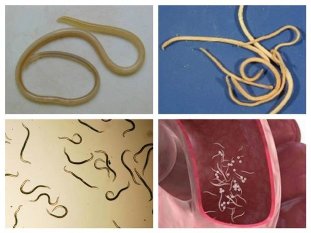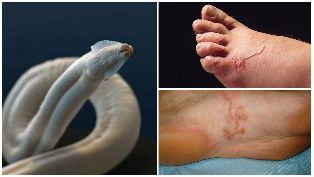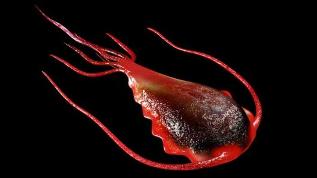Daily helminths infected adults and children, it can be defensive, but not always. Therefore, in order to clearly understand what you need to know that the kind of. Only correct identification of the helminthiasisok you can win.
In this article, you will learn: what human worms exist, where we can pick up typical signs of infection. Take care of your health, and remember that You're the only one.

Human worms — classification
Helminths (worms) – a huge class of parasitic worms live in humans, animals, plants. Helminths, parasitic worms, feeding on the internal resources of the body, the "boss" not only weakens the body, but also contribute to related to other diseases.
It's pretty weird, but almost every second person – the carrier is one of the types of worms, and I don't even know about it until the complications can turn to, or will be, carried out supplementary investigation. Depending on the climatic zones on different continents in different worms.
Also, worms are divided into so the transportation organization organization:
- organic worms – transmitted animals;
- contagious, by the infected person;
- geo worms – larvae stored in the soil.
If ingested larvae of the body, moving the body through the bloodstream and deposited in the organs. Most often, the worms settle in the different parts of the intestine. Classification according to place of settlement of parasites:
- Translucent worms live in the hollow organs.
- Tissue located in the tissue.
- Others live in the hollow organs, and the thicker fabric.
In the nature of approximately 250 species of helminths. Each requires certain conditions, the existence of the development. Worms vary in size, shape, and other characteristic properties.
The classification of these parasites is not yet fully formed, and then approved by the scientists.
Separation of the worms on a territorial basis to the place. This fact complicates the classification of the parasites. The countries in the middle-latitudes with moderate climate conditions, it is possible to count more than 20 species of helminths, which are divided into three groups depending on the appearance, form:
- Round (nematodes);
- Tape (cestodes);
- Flat (trematodes).
Nematodes and trematodes are more common in nature than the tape parasites. The human body is the ideal environment for the reproduction, or growth diagnosed, and ascarids. Also common, the Trichinella. The cestodes belonging to the bovine, pig, rat cep to a tapeworm.
Types of worms in humans — yarn (nematodes)
Another name for these worms – nematodes. This is the type of the worms, so that is the most common. These characteristics of the round shape of the cross section. The body length of the different species of worms differ from 5 mm to 40 cm.

Life in general select in the gut, but it's easy enough to migrate to the host organisation and within other organs.
The wide distribution of the nematodes is due to the fact that the infection with them is very easy. Intermediate host is not necessary, but they are transmitted from infected person to another. Also, the infection may develop eating unwashed fruit or vegetables. Therefore, the infection of these helminths specific to the children, because they tend to violate the rules of hygiene.
Pinworms
Pinworms – representatives of the yarn have a circular, length approximately 2 cm. May both the adults and the kids. Director of the small intestine develop in the larval stage grown for 2 weeks. Diagnosed, because the disease enterobiasis.
Enterobius infection is manifested in inflammation of the walls of the gut, disturbed digestion, and toxins, worms, because the local hemorrhages. The disease manifests itself in the evening, the itching, the anus. Itching, because the females lay their eggs.
Infection Enterobius possible, not only in the relationship shared objects of an infected person, but the vegetables in the garden (eggs stored in the soil), cockroaches, and flies the eggs of the worms. When enterobiasis in women parasites can also cause inflammation of the genital organs. Also become inflamed, scratched, which leads to the staphylococcus.
Cylindrical worm
Ascarids – round worms grow up to 40 inches in diameter, 6 cm. The eggs of ascarids in contact with the soil can be stored there for a year before the favorable environment for development. When the industry larva enters the host organisation begins to grow, produce toxins that affect the lungs, liver.
The larvae spread in the body, and affects the blood vessels causing inflammatory lesions. Director in the intestine, and then feed it your own content. A day to lay thousands of eggs.
Thanks to the substantial size of the cylindrical worm in search of food can move into the channels of the pancreas, bile ducts of the liver, because the inflammation of the intestine can get into the throat and block the airway. Because such diseases as ascariasis.
The presence of ascarids in the body recognised by these symptoms:
- Nausea, vomiting, abdominal pain.
- Fatigue.
- Diarrhea, red worms in the stool.
- Allergic reactions.
Orsóférgek tend to curl the ball, so you have a obstruction of the intestine and result in peritonitis.
The escape
Following the representative round worms escape. The length of 5 cm. The unusual form – the main part is thin, and the short section – level. The presence of a human escape cause trihozefalez.
The presence of the body of the escape trichocephalosis lead and manifesting symptoms:
- abdominal pain, loss of appetite;
- diarrhea, constipation changes;
- sometimes blood in the stool;
- the iron deficiency anemia.

Toxocara
This species is the yarn that lives in the stomach of the dog and faeces, and the eggs fall to the ground. Externally, the parasite, like a drug, but this woman is only 15 cm. The full life cycle of this parasite takes place in the body of the dog, so getting a favourable environment, the human, the larvae perish, but have time to hurt.
Faith is the muscle, liver, lungs, heart, tissues of the eye, the brain, the disease toxocariasis.
Activity of the larvae in the body, manifesting in such symptoms:
- temperature rise;
- swollen lymph nodes, liver;
- skin rash;
- lungs;
- shortness of breath, wheezing, dry cough;
- mental disorders, or seizures;
- the blood test shows the presence of eosinophils.
Confirm the diagnosis through scraping the affected area of the skin, the blood test for the antibodies, liver biopsy.
Ancylostoma
In this case, the infection occurs in the skin or if swallowed larvae. Blood can the lungs, the heart, but rather the small intestine. They live about 4 years, which is in the hands or feet. The symptoms:
- Fever.
- Increased salivation.
- Eosinophilia.
The pathology occurs in the running stage of the infection, when the body accumulates a large amount of worms. The initial stage will be asymptomatic, which is detected by the pathologist by accident.
Tapeworms (cestodes)
If we examine the varieties found in humans, the worms, the tapeworms are among the most dangerous. The main risk associated with the size, because this is the type of parasites may reach a length of 18 m.
For this reason, the effect of the human body is very unfavorable. Full cycle of life requires a change to the owner. A part of the tapeworm live in the body of the cattle, which through the people.
A tapeworm
A tapeworm up to 10 feet long. The cracks in the head connected to the surface of the intestine. The human body gets the raw freshwater fish as a larva, and develops fully within a month.
Symptomatic presence of the parasite in the body is displayed, as follows:
- beriberi a deficiency of vitamin B12, folic acid;
- vomiting, nausea, diarrhea;
- disorders of the gastro-intestinal tract;
- exhaustion;
- the increase in temperature.
This parasite by touching it with the nutrients absorption, the surface and the significant body. The switching point broad tapeworm necrosis develops. Calais-in segments (containing eggs), the worms and the eggs.

Beef tapeworm
Beef tapeworm (tapeworm) lives in the small intestine, 7 feet long. Bovine tapeworm larvae infect humans by eating raw beef. The larvae are easy to spot in the flesh, because of the size of approximately 5 mm. the human body, the larvae grow for 3 months.
Propagated by means of the segments, which are up to 150 thousand larvae. Such segments of the body, the bovine tapeworm is about 2 thousand.
These segments, regardless of coming out at night to the anus to spread it over the bed. The presence of this worm, because the disease beef tapeworm infection, which manifests itself in the symptoms:
- The depletion of the body.
- Disease of the intestine.
- Loss of appetite, nausea, vomiting.
- Allergic reactions.
Pork tapeworm
Pork tapeworm can be mixed with a bull, but the size of the modest – 2.5 meters. And the number of segments, this parasite is also smaller – about 1 thousand. The head of the worm suckers and a proboscis with hooks, which is attached to the thicker of the intestines.
May be infected raw meat, fat. This parasite causes the disease taeniasis and cysticercosis. Symptomatology number depends on the worms in the body. A number of parasites can lead to blockage of the intestine that can be treated only surgically.
Ancylostoma
The pathogen of the hands or feet. Habitat – 12-perstny gut. The length of the worm 14 millimeters. Fed by nutrients that are produced in the intestinal wall.
The parasite through the blood vessels of the liver, the lungs, the heart. Ankylostoma infection manifests these symptoms:
- burping, nausea, heartburn, vomiting, diarrhea;
- headache, dizziness;
- cough, dyspnea, pneumonia, pain in the heart;
- fatigue, chronic fatigue.
Hookworm causes: hepatitis, ulcer 12 duodenal ulcer, bronchitis, pharyngitis, endocarditis. Check that the diagnosis using blood tests, screening, x-ray.
Protozoa
These so-called simple fact that they are single-celled. But this does not mean that the presence of the human body is not cause for concern. These types of parasites will not occur, the less severe disease than in other cases.
Giardia
The danger stems from the presence of the body is not abnormal manifestations. People become infected with these microorganisms, swallowing Giardia cysts. This can occur when swimming in open water. The reproduction occurs by dividing the cell in half.
In the stomach the parasites spread throughout the body together with the blood, affecting different organs.
The patient the symptoms of the different diseases, but I don't think the reason is that the development. Giardiasis often causes the following diseases:

- Allergies.
- Bronchitis.
- With bronchial Asthma.
- Dermatitis.
- The gallbladder inflammation.
- VSD.
- Enterocolitis.
- Dyskinesia 12-duodenum and biliary ducts.
- Enteritis.
- Chronic fatigue.
Further progression of giardiasis may be caused by Central nervous system diseases, and circulatory system.
The symptoms of worms
The manifestation of helminthiasis, people can be different. Symptoms that occur, who have severe infection:
- Painful to look at.
- Weight loss.
- Paleness.
- The itching in the anal area.
In most cases, the infection helminths are also similar to symptoms of other diseases, the treatment, which does not give performance. Depending on the localization of parasites, this number, however, the development of certain symptoms.
The failure of the gastrointestinal system
If the parasitic worms in the intestine, then a person is faced with such problems as:
- Diarrhea, or, conversely, constipation.
- Nausea, vomiting.
- Pain in the intestines.
- Flatulence.
- Sudden loss or, on the contrary, the weight gain.
Large tapeworms can block the intestines and cause constipation. Because of the constant distribution of the waste material, a person can perceive the signs of intoxication – nausea, vomiting, general weakness.
Prevention

Don't forget that the worms will not be fruitful and multiply in the human body, every species has its own time, after which they die, for example, are diagnosed, only a couple of weeks, the industry about a year.
Delayed adults eggs need to leave the body, or stool, or the skin near the anus, into the environment, the soil, but only Mature outside the human body, then they start to become active parasites.
Because, to multiply the people, the worms, does not increase the number of adults in the intestine of an infected person is only possible, if re-infection if the eggs in the fall, again through the mouth into the body.
For example, a person can get rid of the worms after 3-4 weeks without treatment. But it's not easy to follow these rules to the children, the children of primary school age.



































